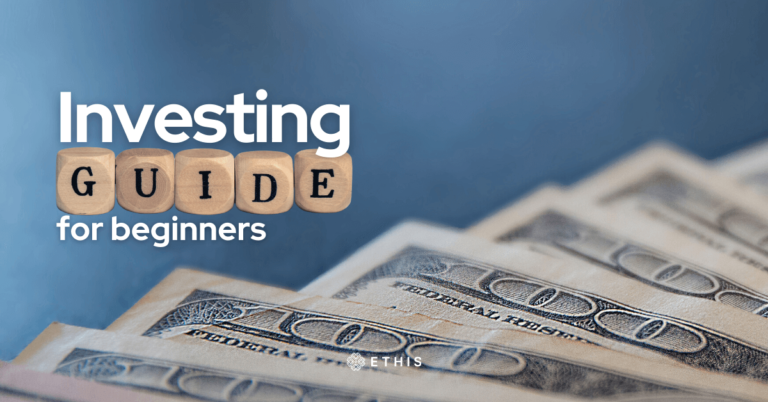Investing is one of the best ways to grow your wealth over time, but for beginners, the process can feel overwhelming. The good news is that Canada offers several safe and beginner-friendly investment options. Whether you want to save for retirement, build an emergency fund, or simply grow your money steadily, this guide will walk you through the safest investments for beginners in Canada in 2025.

Why Safe Investments Matter for Beginners
When you’re just starting out, your primary goal should be capital preservation—protecting your initial investment while earning modest returns. Safe investments minimize risk, provide predictable income, and help build financial confidence.
Key Benefits of Safe Investments:
- Protection against market volatility
- Consistent income (through interest or dividends)
- Low barriers to entry
- Peace of mind for new investors
1. High-Interest Savings Accounts (HISAs)
- Risk Level: Very Low
- Average Returns: 1.5% – 3.5% annually
- Best For: Emergency funds and short-term goals.
Why It’s Safe:
Your money is insured by the Canada Deposit Insurance Corporation (CDIC) up to $100,000 per account. HISAs are flexible, allowing you to withdraw funds anytime without penalties.
Examples in 2025: EQ Bank, Tangerine, and Simplii Financial.
2. Guaranteed Investment Certificates (GICs)
- Risk Level: Very Low
- Average Returns: 2% – 5% annually (depending on term)
- Best For: Fixed savings goals.
Why It’s Safe:
With GICs, you deposit a fixed amount of money for a set period (e.g., 1–5 years) and earn guaranteed interest. They are also CDIC-insured, making them a safe bet.
Tip: Ladder your GICs—invest in multiple terms to balance liquidity and returns.
3. Government Bonds
- Risk Level: Low
- Average Returns: 2% – 4%
- Best For: Long-term safety.
Why It’s Safe:
Government of Canada bonds are backed by the federal government, making them one of the safest investments available.
Options:
- Canada Savings Bonds (CSBs)
- Provincial Bonds
4. Exchange-Traded Funds (ETFs) – Low-Risk Options
- Risk Level: Low to Moderate
- Average Returns: 4% – 7%
- Best For: Beginners looking for market exposure without high risk.
Why It’s Safe:
Index ETFs that track the S&P/TSX Composite Index or global markets spread risk across many companies. Some ETFs focus on dividend-paying or blue-chip stocks, offering stability and income.
Examples: Vanguard FTSE Canada All Cap Index ETF (VCN), iShares Core S&P 500 ETF (IVV).
5. Dividend-Paying Stocks
- Risk Level: Moderate (lower than growth stocks)
- Average Returns: 4% – 6% (plus dividends)
- Best For: Building passive income.
Why It’s Safe:
Large, established Canadian companies like Royal Bank of Canada (RBC), Enbridge, and BCE Inc. have a strong history of paying dividends consistently.
Tip: Reinvest dividends to compound returns over time.
6. Robo-Advisors
- Risk Level: Low to Moderate
- Average Returns: 4% – 7%
- Best For: Beginners who want automated investing.
Why It’s Safe:
Robo-advisors like Wealthsimple or Questwealth build diversified portfolios of ETFs based on your risk profile. They handle rebalancing and tax optimization for you.
7. Tax-Free Savings Account (TFSA) & Registered Retirement Savings Plan (RRSP)
These are not investments themselves but accounts that shelter your investments from taxes.
- TFSA: Grow your money tax-free. Perfect for both short and long-term investing.
- RRSP: Contributions are tax-deductible, and growth is tax-deferred until withdrawal.
Why It’s Safe:
By investing through TFSA and RRSP, you maximize your returns by reducing or deferring taxes.
Tips for Beginner Investors in Canada
- Start Small – Even $50/month builds wealth over time.
- Diversify – Don’t put all your money into one investment type.
- Avoid High Fees – Choose low-fee ETFs or robo-advisors.
- Think Long-Term – Safe investments grow steadily over years, not overnight.
- Stay Informed – Learn about inflation, interest rates, and market basics.
Common Mistakes to Avoid
- Chasing high returns with risky stocks.
- Ignoring inflation (keep returns above inflation to preserve purchasing power).
- Withdrawing investments too early.
- Failing to use tax-advantaged accounts (TFSA, RRSP).
Conclusion
For beginners in Canada, the safest investments in 2025 include HISAs, GICs, government bonds, ETFs, dividend stocks, and robo-advisors. Pair these with tax-efficient accounts like TFSA and RRSP to maximize returns. By starting with safe, low-risk investments, you can build a solid financial foundation while gaining confidence for more advanced strategies in the future.
